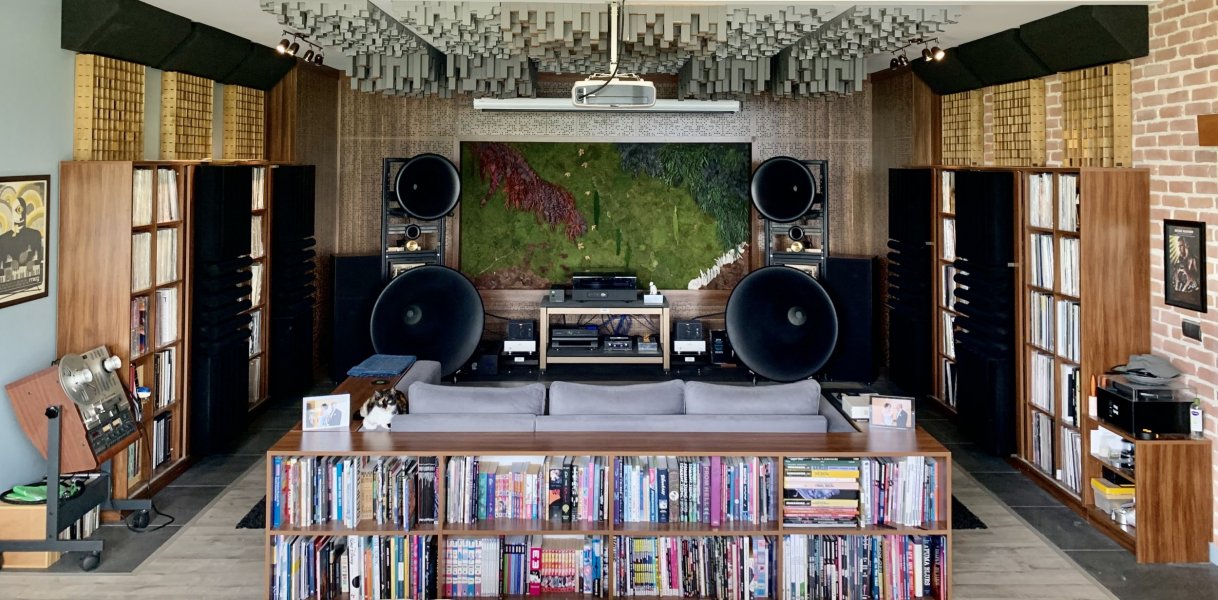So what, in your wise wisdom and education, is the desired target curve for a good acoustically treated room? Flat response?
Is not the room’s response system dependent?
Do tell us more about experiencing a “very good room”. What exactly constitutes a “very good room”?
I’m curious and look forward to your answers.
Somehow, I think that many here have lost sight of the goal, which is musical enjoyment and not instrumentation.
I know that I have personally have never needed a good acoustically treated room to enjoy Miles Davis, John Coltrane, the Doors, the Cure, the Smiths, Sonny Rollins or ..........on a high resolution system.
No need to be rude, I do not have "very wise wisdom", I was just stating facts based on measurements and listening so as to help people searching. As you asked for it, here is how I got interested and learned what I have learned. I have both education and practice/experience in a few fields about sound. I studied architecture and had formal acoustics education at school. Then, also as a part time musician, I started to go to recordings where I got more interested in production. I have spent some time at studios and then proceed to build one for my own. I always kept reading and trying to experiment and visit rooms and take measurements and slowly start to correlate what I measure with what I hear. I took ear training for production. Then I got interested in horn speakers and started building my own speakers as well as rooms. I was lucky to have listened to a variety of good speakers growing up as my father and his friends were also interested in music and hifi. I really got into high efficiency directivity controlled speaker design and small room acoustics, they have become a passion of sorts. After marriage I have closed my studio but I still keep my equipment for some time later, hopefully getting closer. As a side job, I consult people on their studio mixing and home listening rooms acoustics. I will share here in my post my own room and speakers frequency response along with my rooms decay response so you can have an idea. This is a non dedicated room, our houses living room and it has much better response than a lot of studios I have visited and almost all the listening rooms. Please not this is a 5db scale showing detailed response anomaly if existing. My bass can be adjusted so I can choose to listen closer to a harman preferred response. This here is a flat response. There is no eq, nothing, and it is passive crossovers with 5 way horn loaded system. If you are more interested check the monoandstereo article on my room and speakers. Unless you come and listen, these are the best clues you can have if my sound is balanced and my rooms addition is controlled and homogenous.
https://www.monoandstereo.com/2019/11/okan-soylu-horn-system.html
My whole goal is musical enjoyment and besides playing music I am an avid listener with no TV since 1997 and a I listen to at least a few hours of music everyday. I have thousands of LP's and thousands of CD's that I collected throughout the years and I keep on searching and listening and buying still. I listen to a variety of genres of music. So, I am not an equipment listener nor I want to listen to a room which is intended for replay of recordings. You can enjoy music with any system but that was not the question here. It actually is not a question at all, you enjoy whatever you like to enjoy, no one has a say in it. The question is if we can have a room that has as little harm to our recorded music.
For me what I expect from a room is simple. Good, homogenous decay, and getting harming effects of room modes as little as possible that result in dips and peaks. No room is neutral, they all have a sound even with treatments depending on its materials and proportions and size. However, the idea is to have lineer/controlled room response so as not to have unbalanced frequency response, stereo image and non linear decay throughout the band that would acoustically shadow upper frequencies details and tails. As a note, room placement of speakers and the listener is as much imortant as the treatments. One can not be enough, both has to be taken care of if we want fidelity to recording.
Attachments
Last edited:












